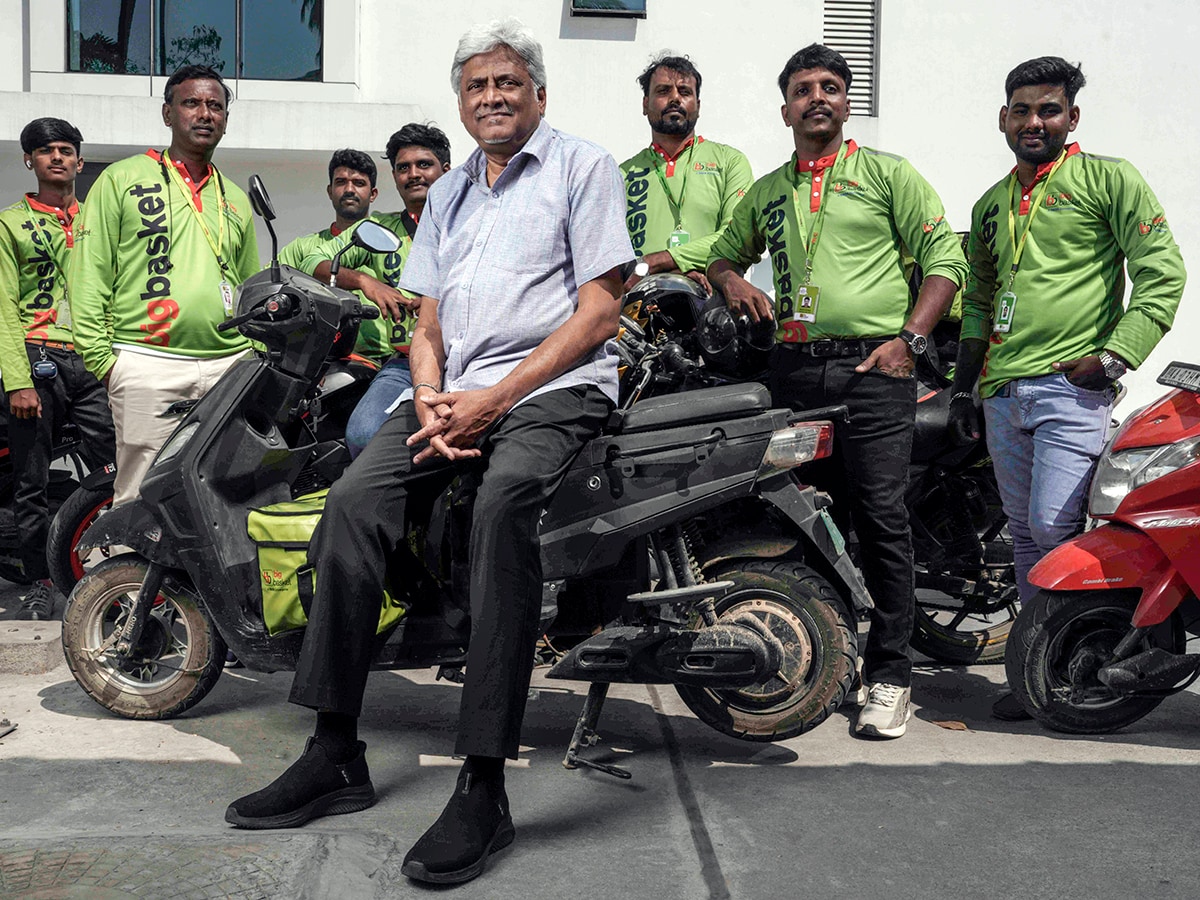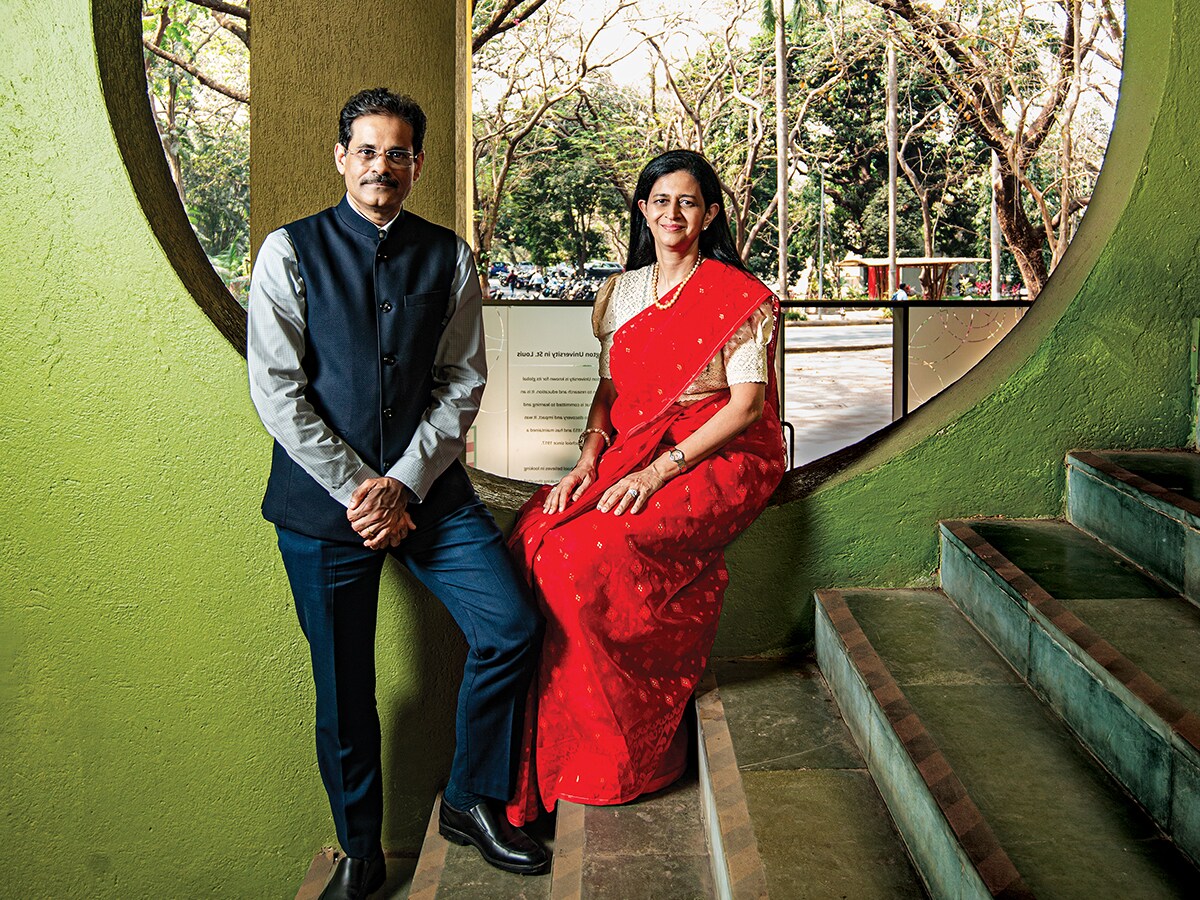1) The ‘Eternal’ question
 Deepinder Goyal, CEO, Zomato Image: Madhu Kapparath
Deepinder Goyal, CEO, Zomato Image: Madhu Kapparath
The story of quick commerce in urban India goes something like this: It is the fastest-growing ecommerce segment. Its market size jumped from $0.3 billion in FY22 to $3.8 billion in FY24 and is likely to reach $7.1 billion by the end of FY25. Experts and analysts believe that the availability of low-cost employable labour has been among the crucial factors for the success of quick commerce in India. Deepinder Goyal’s Blinkit plays a significant role in writing this chapter. Goyal even came up with a new name for his latest consumer tech powerhouse—Eternal, which also includes Zomato, District, and HyperPure. While new avenues are being searched, old questions about growth and profitability remain unresolved. What is Goyal’s game plan? Let the man himself tell you.
2) Too fast, too furious
 Grocery stores, such as this one in Dwarka, New Delhi, are experiencing lower purchase volumes amid the rise of quick commerce. Image: Amit Verma
Grocery stores, such as this one in Dwarka, New Delhi, are experiencing lower purchase volumes amid the rise of quick commerce. Image: Amit Verma
Running a house is also about meticulous planning, which involves taking inventory, costing, budgeting, and negotiating tasks to make life easy. So when there are gaps in this planning, people, at least in urban India, are now turning to quick commerce services. Be it medicine delivery in the middle of the night or bringing cooking oil at the break of dawn so that breakfast is cooked on time. Blinkit, Instamart, Zepto, Flipkart Minutes, BigBasket, and even your nukkad ka store is playing this 10-minute delivery game. But being on top of this comes at a cost. This industry is burning Rs1300-1500 crore every month. There are no profit-making Qcomm companies yet. The second important story from Forbes India’s Quick Commerce special issue asks if this fast and furious business model is sustainable in the long term. If only they had Vin Diesel in their family!
3) QComm and tough road to profitability
 Hari Menon, co-founder and CEO of BigBasket Image: Selvaprakash Lakshmanan for Forbes India
Hari Menon, co-founder and CEO of BigBasket Image: Selvaprakash Lakshmanan for Forbes India
India’s ‘fastest growing industry segment ever’ logged a 24-fold increase in gross order value between FY22 to FY25. BigBasket, one of the prominent entities on India’s quick commerce canvas, appeared on the scene in 2023 with BBNow. A year later, the Tata Digital-owned company transitioned from India’s biggest online grocery delivery platform to a full-scale quick commerce brand that now gets 50 percent of its business from non-grocery items. BBNow is playing catch up with the race leaders, but Hari Menon, co-founder and CEO of BigBasket, is confident their mastery of dark stores will help them. In conversation with Forbes India, Menon also discusses why profitability is tough in the business, managing valuations, and more.
Discover
1) Promises, promises

Things are not going well with Hindustan Aeronautics Limited (HAL), as is evident from the viral video of Indian Air Forces’ Air Chief Marshal AP Singh reprimanding the company officials at Aero India 2025. “I can only share our concerns and requirements,” Singh told them from the indigenously developed Hindustan Jet Trainer (HJT) 36 cockpit. “At this point, I have no confidence in HAL, which is not a good situation. I was promised that when I came here in February, 11 Tejas-Mk1As would be ready. And not even one is ready.” The IAF is set to purchase over 150 of the indigenously developed Tejas aircraft from the homegrown HAL. The video has raised concerns about the capabilities of the country’s premier aerospace manufacturer. What’s gone wrong with a darling of the Indian investor? Will better supply chain management and private sector involvement help? Here are some suggestions.
2) Forbes India Climate Warrior
 Krunal Patel (left) and Amrit Om Nayak at Indra Water’s manufacturing unit in Bhiwandi Image: Amit Verma
Krunal Patel (left) and Amrit Om Nayak at Indra Water’s manufacturing unit in Bhiwandi Image: Amit Verma
Most wastewater goes untreated globally, and less than 1 percent is reused. In India alone, there are zero-discharge regulations, and 74 percent of wastewater goes untreated; 600 million people face high to extreme water stress, and water demand is likely to double by 2030. Identifying these as problems that need addressing, Amrit Om Nayak and Krunal Patel launched Indra Water in 2018. They are pioneers in decentralised wastewater treatment with their patented electrically-driven modular systems at the point of source. The aim is to transform the lives of over 100 million people by mitigating water pollution and making fresh water available to the commoners. Here’s why the duo won the Forbes India Leadership Awards 2025 for Climate Warrior.
3) Forbes India Grassroots Philanthropist
 Rizwan and Rekha Koita, directors and co-founders, Koita Foundation Image: Bajirao Pawar for Forbes India
Rizwan and Rekha Koita, directors and co-founders, Koita Foundation Image: Bajirao Pawar for Forbes India
Philanthropy is not just about cutting cheques for those in need. The work Rekha and Rizwan Koita have been doing via their Koita Foundation is a testimony of the acts that go beyond money and get concrete results. Rekha primarily works with non-profits in education, health care and livelihoods. Rizwan uses his experience running a health-tech startup to work with the government, healthcare institutions, and national-level organisations to support technology initiatives in the healthcare sector. “We still don’t have a fixed corpus. We have committed that we will not be a grant-making entity, but be closely involved with all the initiatives we undertake,” says Rizwan. “The limiting factor for us is not money, it is time.” Here’s why the directors of Koita Foundation won the Forbes India Leadership Awards 2025 for Grassroots Philanthropists.
4) The price of an Oscar
 Anora swept the 2025 Oscars, winning five awards, including Best Picture and Best Director.
Anora swept the 2025 Oscars, winning five awards, including Best Picture and Best Director.
Let’s look at the high-stakes world of Oscar campaigning, where winning isn’t just about artistic merit but also deep pockets. Director Sean Baker’s film Anora swept the top awards at the 97th Academy Awards earlier this month. Media reports are now emerging that the producers of the little indie film actually spent a staggering $18 million on its Oscars push. This might be the levelling field they talk about, where major studios and independent filmmakers alike pour millions into marketing to sway Academy voters. None leaves a stone unturned by devising intricate strategies—lavish events, targeted advertising, and relentless PR efforts—designed to craft an irresistible awards narrative. Indian filmmakers who dared to run this race with their films shed light on how securing an Oscar isn’t just about talent and storytelling; it’s also about playing (and paying for) the game.
 Deepinder Goyal, CEO, Zomato Image: Madhu Kapparath
Deepinder Goyal, CEO, Zomato Image: Madhu Kapparath Grocery stores, such as this one in Dwarka, New Delhi, are experiencing lower purchase volumes amid the rise of quick commerce. Image: Amit Verma
Grocery stores, such as this one in Dwarka, New Delhi, are experiencing lower purchase volumes amid the rise of quick commerce. Image: Amit Verma Hari Menon, co-founder and CEO of BigBasket Image: Selvaprakash Lakshmanan for Forbes India
Hari Menon, co-founder and CEO of BigBasket Image: Selvaprakash Lakshmanan for Forbes India



